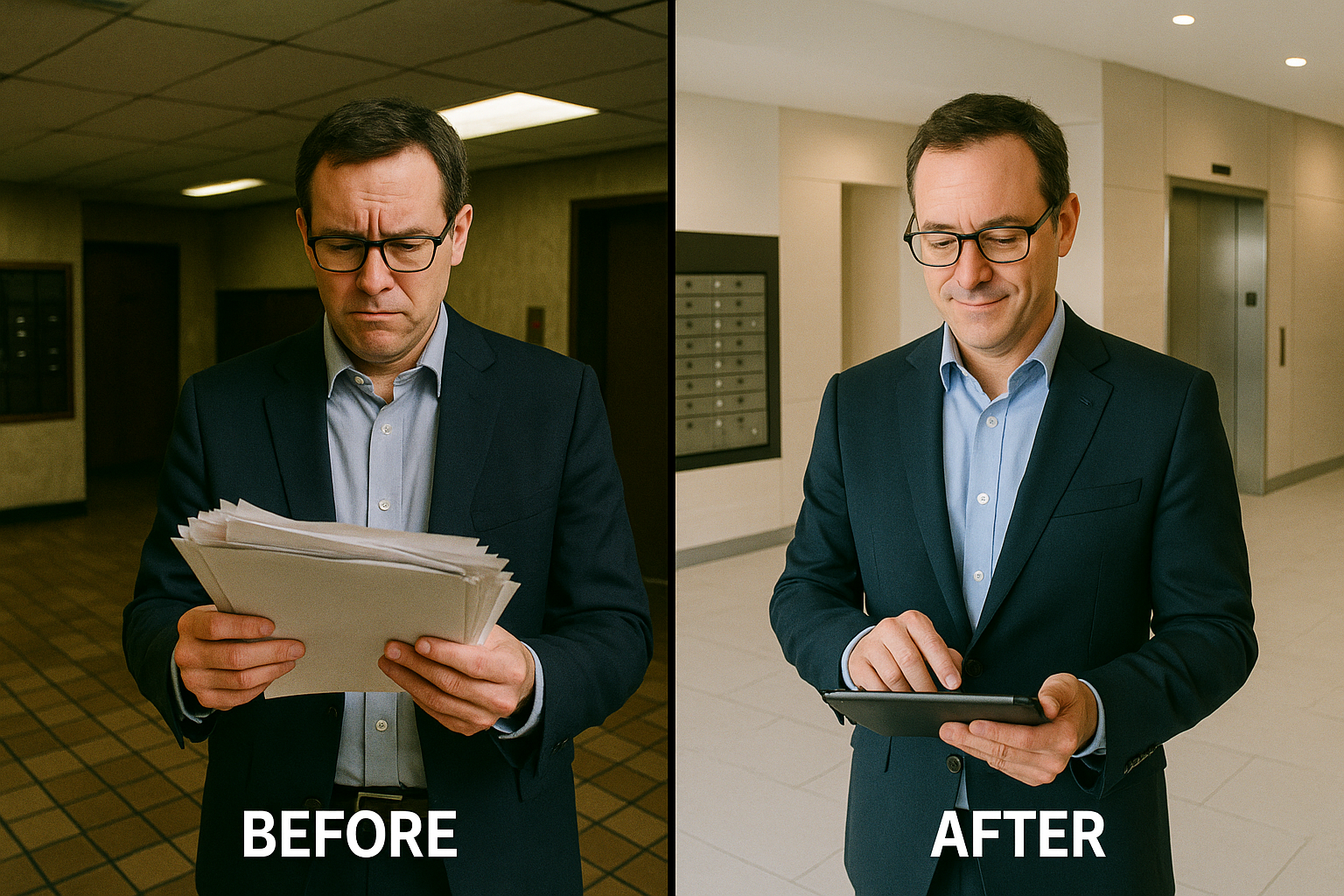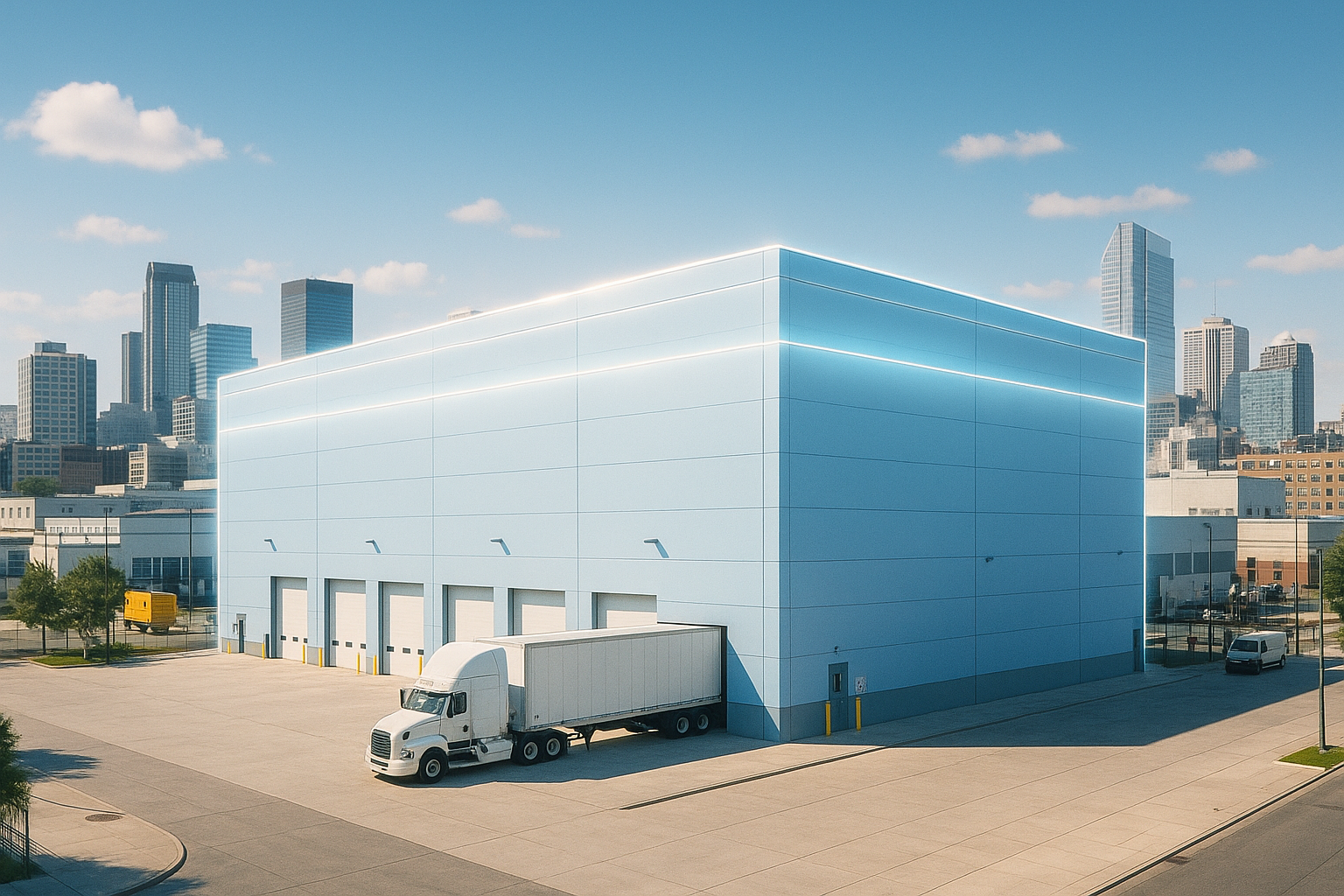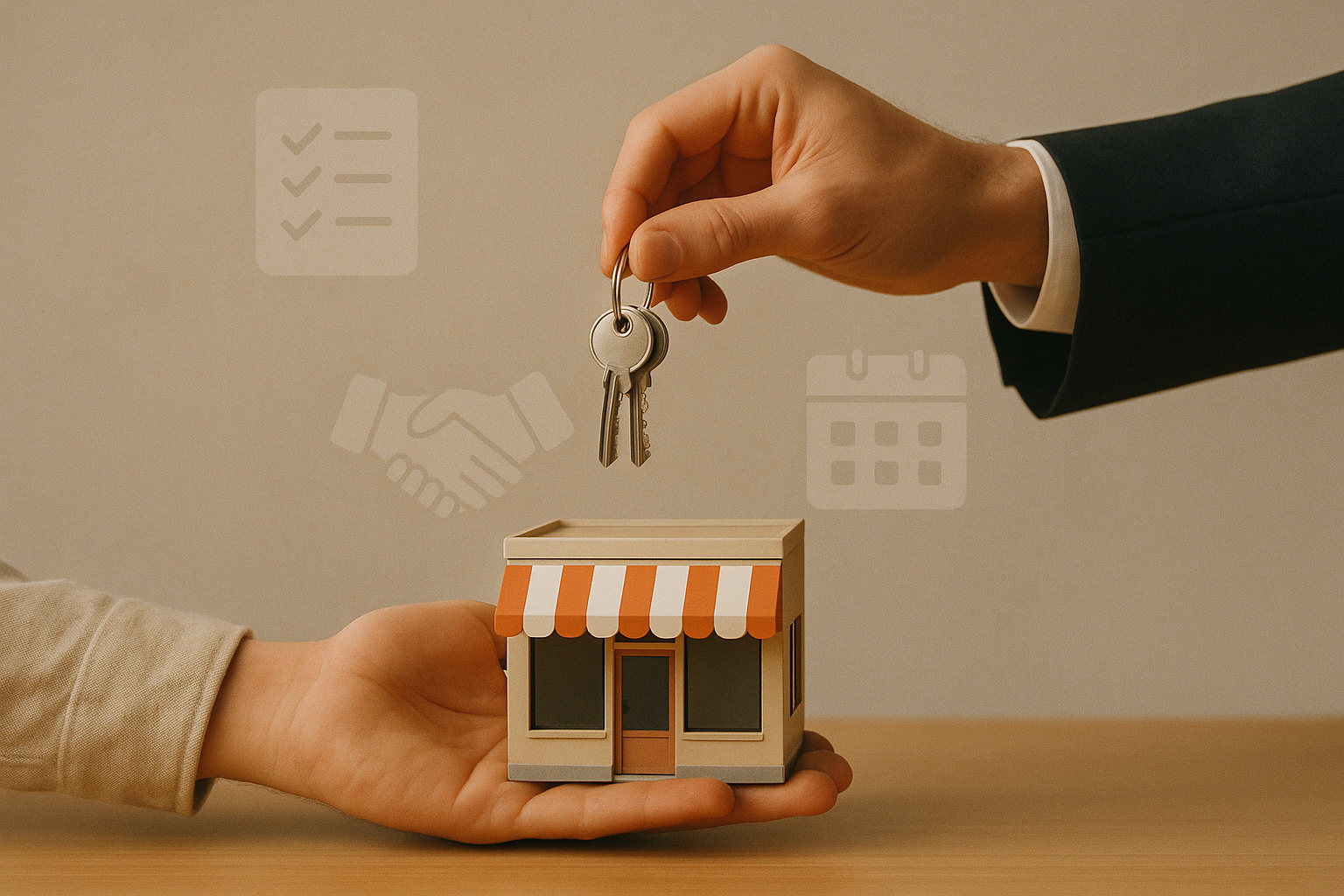How do you keep your tenants happy and engaged while keeping an eye on costs in 2025? A global 2025 survey of corporate real estate leaders – representing over 8.1 million employees worldwide – highlights an industry at a crossroads. Companies are still laser-focused on cutting expenses, yet they’re also under pressure to support talent, culture, and flexible work needs in their office spaces. In simple terms, cost remains king, but tenant experience is the rising heir to the throne.
In this post, you’ll learn key takeaways from that occupier survey and how they apply to you. We’ll explore how to address cost pressures without sacrificing tenant satisfaction, align your success metrics with people-focused outcomes, improve your building’s operations, and adapt to today’s hybrid work reality.
Balancing Cost Control with Tenant Experience
According to the survey, controlling expenses is still the top driver of real estate decisions for most organizations. Your corporate tenants are under constant pressure to reduce costs, optimize space, and boost efficiency – and that pressure inevitably passes on to you as the landlord or manager. Financial metrics like cost per square foot and utilization rates have long dominated strategy. In uncertain times, with economic and political headwinds, it’s natural to double down on cost-cutting.
However, focusing solely on cost can be shortsighted. Why? Because every real estate decision you make also impacts the people in those spaces – the employees who use the office daily. Saving money means little if a barren, unpleasant workplace drives your tenants’ employees away.
Leading companies are realizing that the office isn’t just a line item – it’s a tool for employee engagement and productivity. In fact, many businesses now aim to optimize costs and provide a better office experience at the same time. This means you should seek win-win investments: for example, energy-efficient building upgrades that lower utility bills but also improve comfort, or space redesigns that pack more utility into less square footage. Look at your property not just as an expense to trim, but as a value-driver for tenants’ success.
When you help tenants create an office environment where their people can thrive, you boost their loyalty and justify the rents you charge. In short, don’t treat cost and tenant experience as opposing forces – manage them in tandem. With a bit of creativity, you can save money and deliver a workplace that employees love, keeping tenants happier in the long run.
Aligning Real Estate Metrics with People Outcomes
To make solid decisions in this new era, you’ll need to track the right metrics. Traditionally, building performance has been measured in dollars and square feet – rent costs, occupancy rates, maintenance budgets, and so on. Those are important, but they don’t tell the whole story of how your property contributes to your tenants’ success.. This is a critical gap. If you aren’t measuring things like employee satisfaction, engagement, or how well space supports work, you’re flying blind on the very outcomes that matter to tenant retention.
It’s time to expand your KPI dashboard. Continue to monitor cost and efficiency, but add people-focused metrics into the mix. For example, you might work with tenants to track employee satisfaction with the building, gather feedback on amenities, or look at employee attendance rates on office days as a proxy for engagement. These measures show how the workplace is performing as a service for people. The 2025 survey calls for a “balanced scorecard” approach that bridges cost control and workforce impact. In practice, that means linking real estate decisions to outcomes like employee productivity, collaboration, and even talent retention. You can start by developing a few credible metrics (in partnership with your tenants’ HR or management teams) that connect improvements in the building to improvements in morale or productivity.
By doing so, you demonstrate the ROI of workplace investments in human terms. When you can show, for instance, that a new lounge space boosted onsite team collaboration by X% or that faster response times to maintenance requests raised the tenants’ employee satisfaction scores, you make a powerful case that your property is driving business value, not just costing rent. This alignment of metrics with people outcomes will strengthen your collaboration with tenants’ HR and IT teams and ensure everyone is on the same page about what success looks like.
Elevating Tenant Experience with Amenities and Service
Today’s tenants are raising their expectations for what an office building should provide – and they’re willing to pay for it. Simply offering four walls and a roof is no longer enough. According to the survey, 85% of occupiers (tenants) now expect landlords to deliver enhanced amenities, services, and overall workplace experiences, not just basic space. Nearly half of these companies (46%) say they’re willing to pay a premium for better amenities and services in their buildings.
This is a clear message that investing in tenant experience can pay off. In fact, top-tier office properties that provide superior experiences are commanding roughly a double-digit rent premium in today’s market. Tenants value a building that helps them attract talent and keep their own employees happy, and they will reward owners who deliver that value.
However, there’s currently a gap between what occupants want and what they feel they get. Only about 60% of employees believe their current office environment supports collaboration, relationship-building, and culture – the very reasons people come into an office instead of working from home. This gap is an opportunity for you. By elevating the tenant experience, you differentiate your property. Start by assessing what amenities or services make the biggest impact on your tenants’ day-to-day life. It could be as simple as improving common areas and conference facilities, offering reliable high-speed internet and smart meeting rooms, or organizing community events, wellness programs, and other perks on-site. Even small touches – like comfortable lounges, a coffee bar, or a smartphone app for easy service requests – can significantly enhance how tenants feel about coming to work.
Importantly, involve your tenants in this process: ask for feedback, find out what their employees value, and then tailor your offerings. Remember, more and more the office is seen as a service experience, not just a physical space. If you embrace that mindset, by providing support and hospitality, you’ll set your property apart. Tenants who see that you are invested in their success are far more likely to renew leases. In the long run, creating a great tenant experience bolsters your asset’s value – it’s a strategy that benefits both your clients and your bottom line.
Enhancing Operational Excellence Under Pressure
In an environment where cost pressures are high, achieving operational excellence in your building operations is crucial. In fact, many occupiers rank operational excellence as a top strategic priority, right behind cost control. What does this mean for you? It means running your building as efficiently and effectively as possible, so that every dollar spent on operations delivers maximum value. Over the past few years, companies have tightened their belts by shedding excess space – about two-thirds of occupiers reduced their office footprint recently. Now that the era of constant downsizing is easing (only 32% plan further cuts, and some are even expanding again), the focus is shifting from one-time cuts to proactive, ongoing optimization. In other words, rather than just slashing costs, leading teams are asking: How can we run the space we have better?
To enhance operational excellence, start with smart building management. Look for inefficiencies in your day-to-day operations – these are hidden costs that can be eliminated without hurting tenant experience. Similarly, review your maintenance routines: a shift to preventive maintenance (fixing things before they break) can reduce costly emergency repairs and downtime.
Many landlords are also adopting digital tools to track building performance in real time, so they can respond quickly to issues or adjust operations on the fly. The key is to create a culture of continuous improvement in your building management team. Encourage your staff or property management partners to suggest improvements, and involve your tenants too. Often, tenants can share patterns (e.g. low attendance on Fridays in a hybrid model) that help you adjust operations accordingly. Keep in mind that efficient operations benefit everyone: they lower your costs (helping you manage those budget pressures) and they also tend to improve the tenant experience (for instance, a well-maintained, comfortable building makes people happier to be there).
Embracing Flexibility for the Hybrid Workforce
The rise of hybrid work is one of the biggest shifts influencing what tenants need from your building. Many companies now blend remote and office work, which changes how they use space. As a result, office attendance is more variable than it used to be – some days may be busy while others are quiet. Globally, office occupancy levels have settled around 51–60% on a typical day, which is below pre-pandemic peaks but steadily climbing as firms encourage more in-person collaboration.
Companies are also rethinking where they hire talent. According to the survey, 61% of organizations are adapting their real estate strategy to tap talent in multiple locations. In practice, this could mean maintaining smaller hubs in different cities, or allowing more remote work and thus needing less central office space. As a landlord or asset manager, flexibility is the name of the game. To retain tenants, you’ll want to accommodate their evolving needs in this hybrid era.
This includes outfitting conference rooms with quality video conferencing gear, ensuring robust Wi-Fi and cellular coverage throughout the building, and perhaps offering touchdown spaces for employees who come in only occasionally. By making your property friendly to both in-person and remote-connected workers, you increase its appeal. Additionally, coordinate with your tenants on occupancy patterns. If, say, most tenants are in-office Tuesday through Thursday, you can concentrate services (like cafeterias or extra concierge staff) on those days, and scale back on lighter days to save cost – all without diminishing the tenant experience.
Communicate openly with tenants about their future space plans and be ready to partner with them. If a tenant is unsure about how their headcount will change, you might offer scalable options or rights of first refusal on adjacent vacant space. They’ll see your property not as a rigid expense but as a versatile asset that supports their way of working, which is exactly what modern occupiers want.
Redefining the Office’s Role and Your Property’s Value
As you look ahead, it’s clear the role of the office is being redefined. It’s no longer just a physical space – it’s a service that must earn its value every day by helping tenants support their people and operations. For owners and property managers, that shift comes with both pressure and opportunity. When you focus on what occupiers actually want – cost-effective building operations, a seamless tenant experience, clear metrics that tie to performance, and flexibility – your property becomes a strategic asset, not just a space for rent.
Achieving that kind of value isn’t simple, but it’s more possible than ever with the right tools. Cove’s commercial property management software brings tenant experience and building operations into one unified platform, helping you reduce software sprawl, improve service delivery, and give tenants a streamlined, modern experience. Instead of relying on separate systems for work orders, communication, amenity bookings, and building data, Cove keeps everything in one place — making your building easier to run and easier to love.
Redefining your building’s role starts by asking: How is this space helping my tenants do their best work? Whether it’s by enabling more collaboration, running more efficiently, or giving tenants the flexibility to adapt, the properties that answer that question well are the ones that will thrive. Operators who lean into this new reality will earn stronger tenant loyalty, justify rental premiums, and build more resilient portfolios. Because today, value isn’t just about cost control — it’s about how your building performs for the people inside.

.png)





